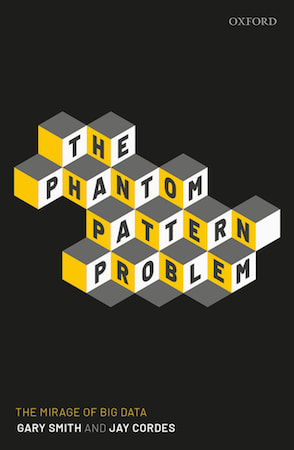Steph Curry Got Red Hot and Torched the “Hot Hand Fallacy”
Many statisticians dismiss remarkable streaks like his as the Hot Hand Fallacy. Are they right?
Is “Hot Hands” really a fallacy, as some claim? Steph Curry is arguably the greatest shooter in National Basketball Association (NBA) history. He is second in career 3-point shooting percentage at 44.30%, slightly behind Steve Kerr’s 45.40% (who is coincidentally now Curry’s coach on the Golden State Warriors). He is first in career free-throw shooting at 90.64%, a smidgen ahead of Steve Nash’s 90.43%.
In 2015, the Warriors reported that Curry made 94 out of 100 3-point shots in practice, including an astonishing 77 in a row. In 2020, during practice the day after Christmas, Curry demolished that record by making 105 consecutive 3-point shots, a performance that Coach Kerr called “insane.” The Warriors videotaped the insanity, so it is pretty clear that it really did happen.
Most players and fans would say that Curry got hot, boiling hot, but many statisticians dismiss such evidence as the Hot Hand Fallacy. They argue — and we agree — that seemingly remarkable streaks and other patterns are inevitable, even in random data, like coin flips. So, the discovery of such streaks and patterns doesn’t, by itself, prove anything at all. We even wrote a book called The Phantom Pattern Problem about the way deceptive patterns in sports, business, law, medicine, the stock market, and more, can create problems.
However, we also believe that athletes are not robots. They are human and their performances are affected by changes in their self-confidence and self-doubts. One example is Craig Hodges’ performance in the semi-finals of the 1991 NBA 3-point shooting contest, when he made 21 of 25 shots, including 19 in a row. Taking into account the number of rounds and participants in the history of this contest, if each shot was independent of previous shots, there was only a 0.0059 probability that any player would do something as unlikely as Hodges’ 19-shot streak.
Let’s give Curry’s 105-shot miracle the same scrutiny. It would be cherry-picking to simply estimate the probability of Curry making 105 consecutive baskets. First, we have to take into account how many 3-point shots he takes. Having a 105-shot streak begin somewhere during a round of 200 shots is difficult, but it is still more likely than only taking 105 shots and making every single one of them. Second, we have to take into account the reality that Curry practices pretty much every day, giving him hundreds of opportunities to make a memorable streak. Third, we have to take into account the fact that Curry is not the only player practicing 3-point shots every day. George Hill, J.J. Redick, Steph’s brother Seth Curry, and dozens of other players are terrific 3-point shooters and would certainly be in the headlines if they made dozens of 3-point shots in a row.

We will start with some fanciful assumptions. Suppose that 10 billion people, each with a rock-steady 0.5 probability of making a 3-point shot, took 500 shots every day during the 13.8 billion-year history of the universe. The probability that someone would make 105 shots in a row is a minuscule 0.00000049. Even with those farfetched assumptions, luck is an unlikely explanation.
Now let’s make some more realistic but still generous assumptions. Curry’s lifetime 3-point percentage is about 44%. Last season, there were 28 NBA players with 3-point percentages between 40% and 46%. Practice shots with no defenders are easier than game shots with defenders; this is why Curry has made 65% of his shots in the annual 3-point contest. So, let’s generously assume that there are 500 players who each have a 0.70 probability of making a 3-point shot. They don’t get hot or cold. They just fire away, as if they were flipping a weighted coin with a 70% chance of landing heads. How many consecutive 3-point shots do they take every day? 100? 200? We will generously assume 500. How many days have players been practicing 3-point shots?
The NBA introduced 3-point shots in 1979 which, coincidence or not, were Larry Bird’s and Magic Johnson’s rookie years. We will generously assume that, every day of every year for the past 50 years, 500 players with 70% accuracy take 500 consecutive 3-point shots.
These are all very charitable assumptions yet the probability that someone will make 105 in a row works out to be a very, very low 0.000000059. Even if we up the accuracy from 70% to 75%, the probability a 105-shot streak is still tiny: 0.000069.
Finally, let’s suppose Curry has an unworldly 80% chance of making every 3-point shot he takes in practice. Even if he takes 500 consecutive 3-points shots, the chances of making 105 in a row is less than one in 200 million. Even if he has been taking 500 consecutive 3-point shots every day since he was 12 years old, the probability of a 105-shot streak is still only 0.000039. Even if 100 players with 80% accuracy have been taking 500 consecutive 3-point shots every day for 50 years, the probability of a 105-shot streak is still only 0.0049.
Our conclusion is that it is very hard to explain Curry’s 105-shot streak as just another lucky day on the basketball court. He got gloriously red hot.
You may also enjoy: Is “Hot Hands” just a basketball myth? Not so fast…
